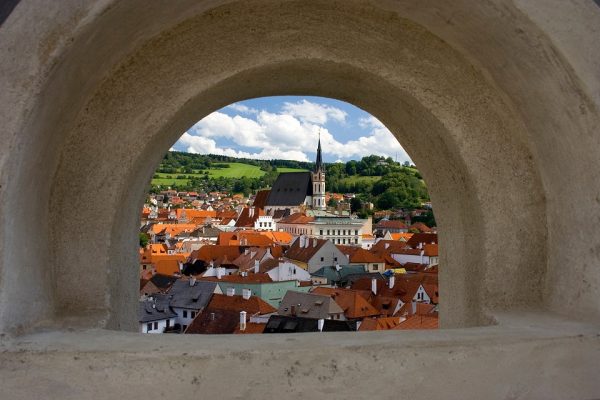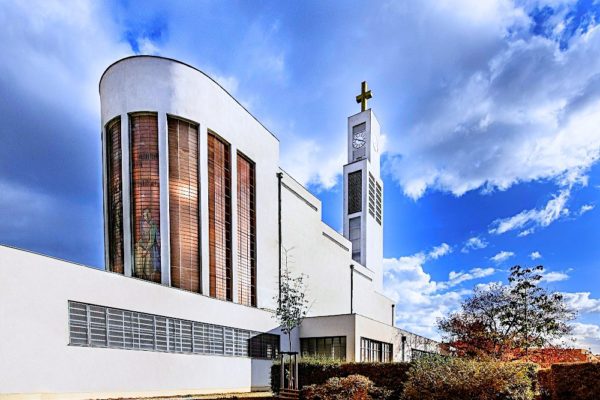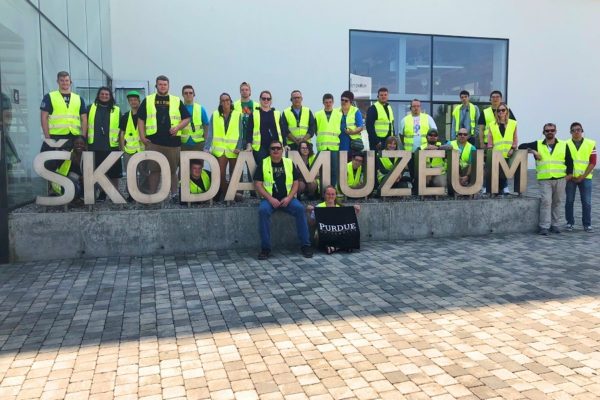In Prague, as in many parts of Europe, the subway is called the metro. The Prague Metro is the rapid transit network of Prague, Czech Republic. Founded in 1974, the Prague Metro now comprises three lines, serving 61 stations, and consists of a transit network 41.5 miles long. Today we’re sharing our Prague Subway Guide for Tourists to assist you on your next trip to Prague.
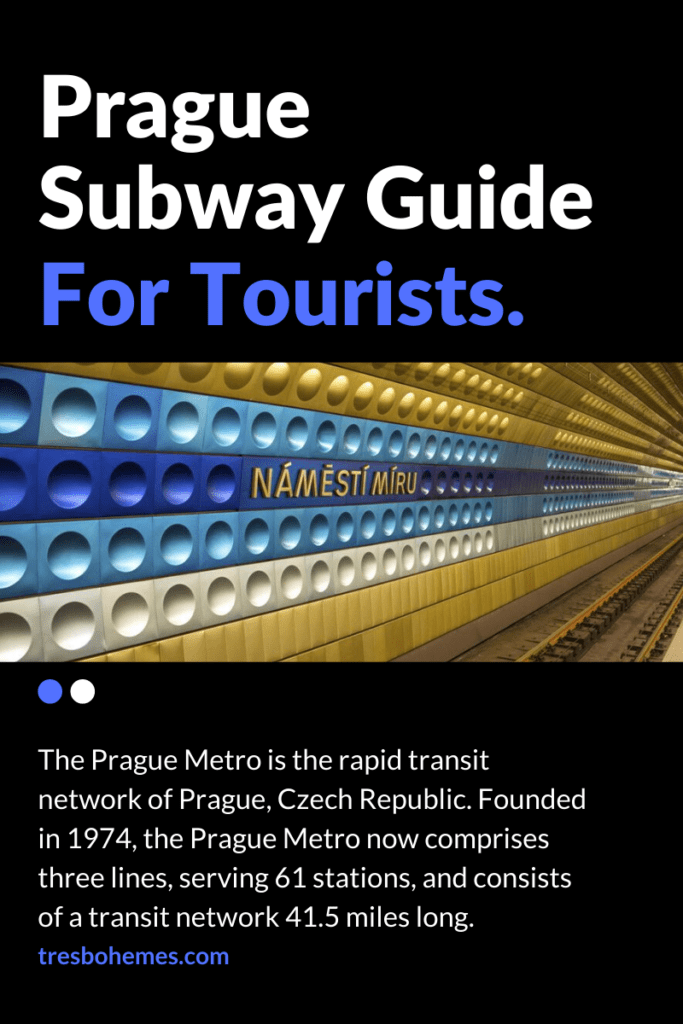
Although the Prague Metro system is relatively new, the idea of underground transport in Prague dates back many years. The first proposal to build a sub-surface railway was made by Ladislav Rott in 1898. He encouraged the city council to take the advantage of the fact that parts of the central city were already being dug up for sewer work. Rott wanted them to start digging tunnels for the railway at the same time. However, the plan was denied by the city authorities. Another proposal in 1926, by Bohumil Belada and Vladimír List, was the first to use the term “Metro”, and though it was not accepted either, it served as an impulse for moving towards a real solution of the rapidly developing transport in Prague.
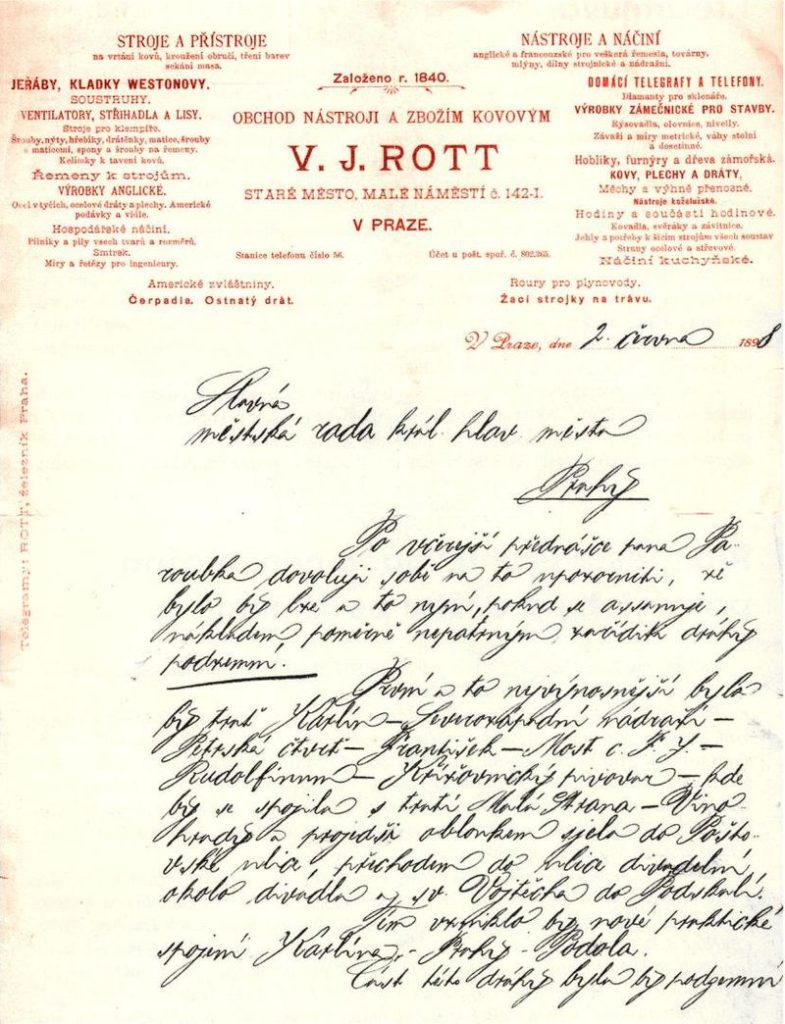
In the 1930s and 1940s, intensive projection and planning works were being held, taking into account two possible solutions: an underground tramway (regular rolling stock going underground in the city center, nowadays described as a “pre-metro”) and a “true” metro having its own independent system of railways. After World War II, all work was stopped due to the poor economic situation of the country, although the three lines, A, B and C, had been almost fully designed.
In the early 1960s the concept of the sub-surface tramway was finally accepted and on 9 August 1967 the building of the first station (Hlavní nádraží) started. However, in the same year, a substantial change in the concept came, as the government, under the influence of Soviet advisers, decided to build a true metro system instead of an underground tramway. Thus, during the first years, the construction continued while the whole project was conceptually transformed. Regular service on the first section of Line C began on 9 May 1974 between Sokolovská (now Florenc) and Kačerov stations.
Since then, many extensions have been built and a number of lines has risen to three.
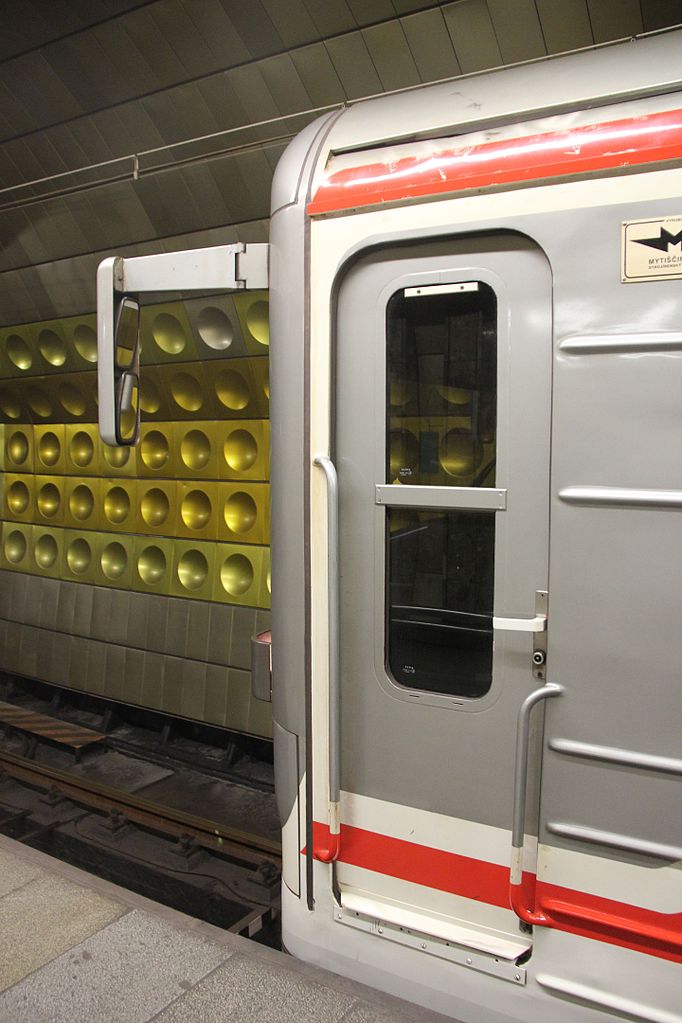
On 22 February 1990, 13 station names reflecting mostly communist ideology were changed to be politically neutral. For example, Leninova station, which contained a giant bust of Vladimir Lenin before the Velvet Revolution, was renamed Dejvická after a nearby street and surrounding neighbourhood. Other changes were:
- Dukelská – Nové Butovice
- Švermova – Jinonice
- Moskevská – Anděl
- Sokolovská – Florenc
- Fučíkova – Nádraží Holešovice
- Gottwaldova – Vyšehrad
- Mládežnická – Pankrác
- Primátora Vacka – Roztyly
- Budovatelů – Chodov
- Družby – Opatov, Kosmonautů – Háje.
Three Lines
The Prague Metro has three lines, each represented by its own colour on the maps and signs: Line A (green, 17 stations, 17 km), Line B (yellow, 24 stations, 26 km) and Line C (red, 20 stations, 22 km). There are 61 stations in total (three of which are transfer stations) connected by nearly 66 kilometres of mostly underground railways.
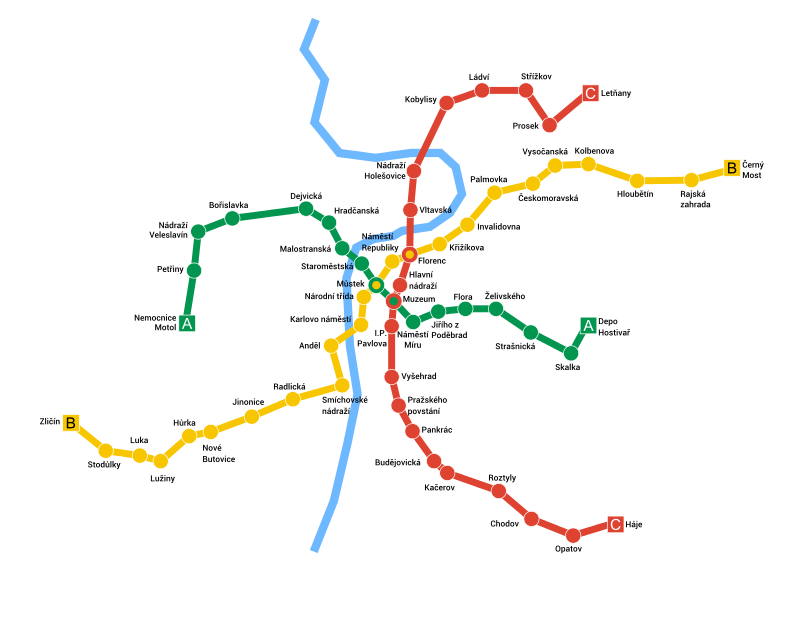
The metro service operates from 4–5 am until midnight, with about 110 to 200-second intervals between trains and 4–10 minutes off the rush hours.
1.6 Million Users Daily
Nearly 600 million passengers use the Prague Metro every year (about 1.6 million daily). Even though the number sounds relatively high, it’s never felt that busy to us, no matter what time of day or evening.
The metro is run by the Prague Public Transit Company Co. Inc. (in Czech, Dopravní podnik hlavního města Prahy a.s.) which manages all means of public transport around the city (the metro, tramways, buses, five ferries, the funicular to Petřín Hill and the chairlift inside Prague Zoo).
Since 1993, this system has been connected to commuter trains and buses and also to “park-and-ride” parking lots. Together they form an extensive public transportation network reaching further from the city, called Prague Integrated Transport (in Czech Pražská integrovaná doprava—PID). Whilst the large system is zonally priced, the metro is entirely inside the central zone.
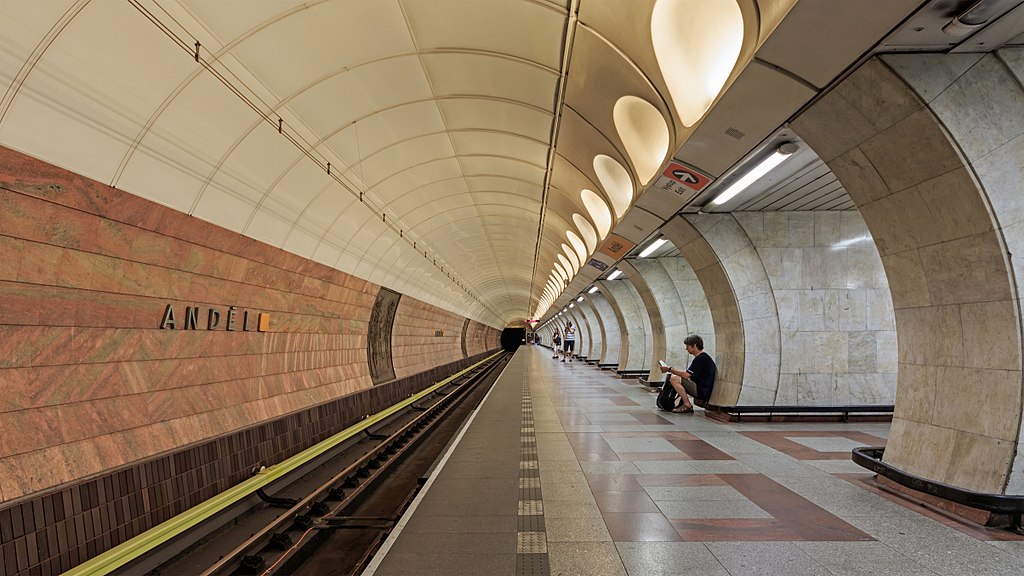
Many Prague Metro stations are quite large, with several entrances spaced relatively far apart. This can often lead to confusion for those unfamiliar with the system, especially at the central hubs such as Můstek or Muzeum. In general the stations are well signposted even for those unfamiliar with the Czech language.
The Prague Metro is Very Safe
The Prague Metro system is laid out as a triangle, with all three lines meeting in the centre of the city at three interchange stations. Each interchange station has two halls, one hall for each line. The depth of the stations (and the connecting lines) varies considerably. The deepest station is Náměstí Míru, located 52 metres (171 ft) under the ground. Parts of the tracks in the city centre were mostly bored using the tunnelling shield. Outer parts were dug by the cut-and-cover method and the stations are only a few metres under the surface. Part of Line B runs in a glassed-in tunnel above the ground.
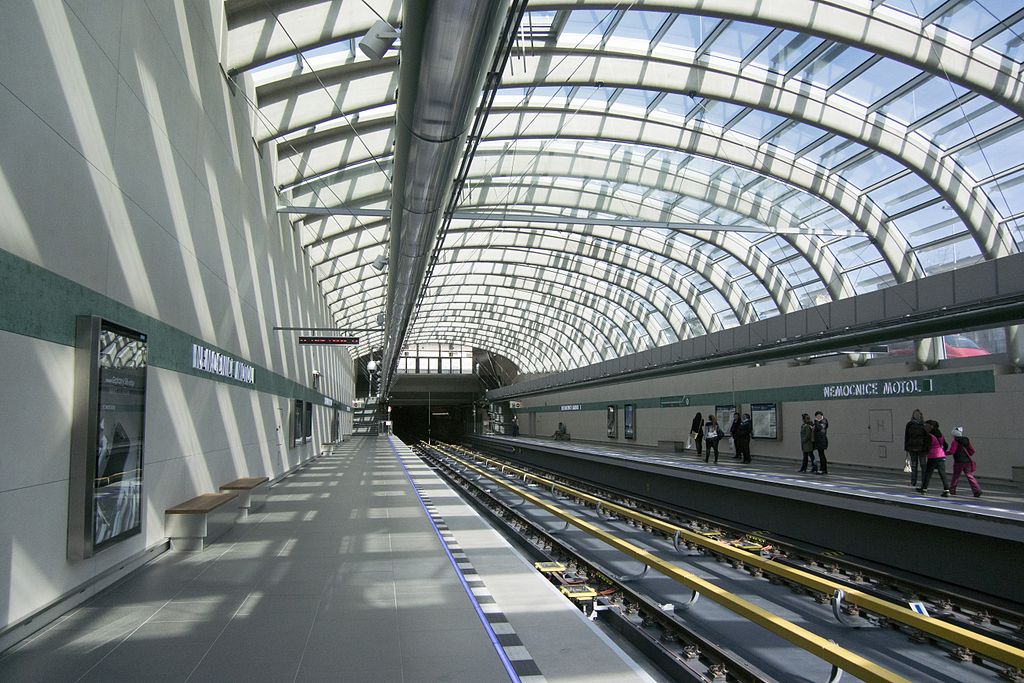
Most stations usually have a single island platform in the centre of the station hall (tunnel) serving both directions. The sub-surface stations have a straight ceiling sometimes supported by columns. The deep-level stations are larger tunnels with the track tunnels on each side. The walls of many stations are decorated using coloured aluminium panels; each station has its own colour. Some stations are considered among the finest in Europe.
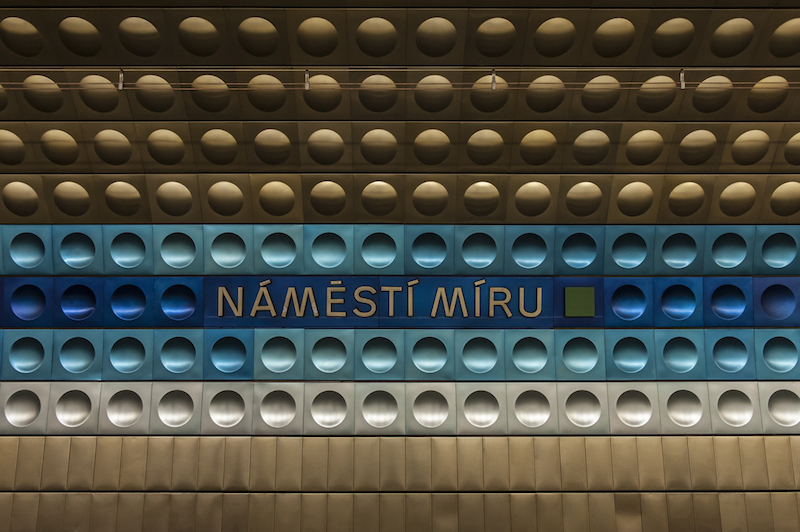
We wrote a post about that where you can see many photos of the beautiful stations, Beneath The City: The Prague Metro.
Medieval Bridge in Můstek Station
The name of station “Můstek” means “little bridge” and refers to the area around the Můstek station. The origin of the area’s name was not known until remains of a medieval bridge were discovered during construction of the station.
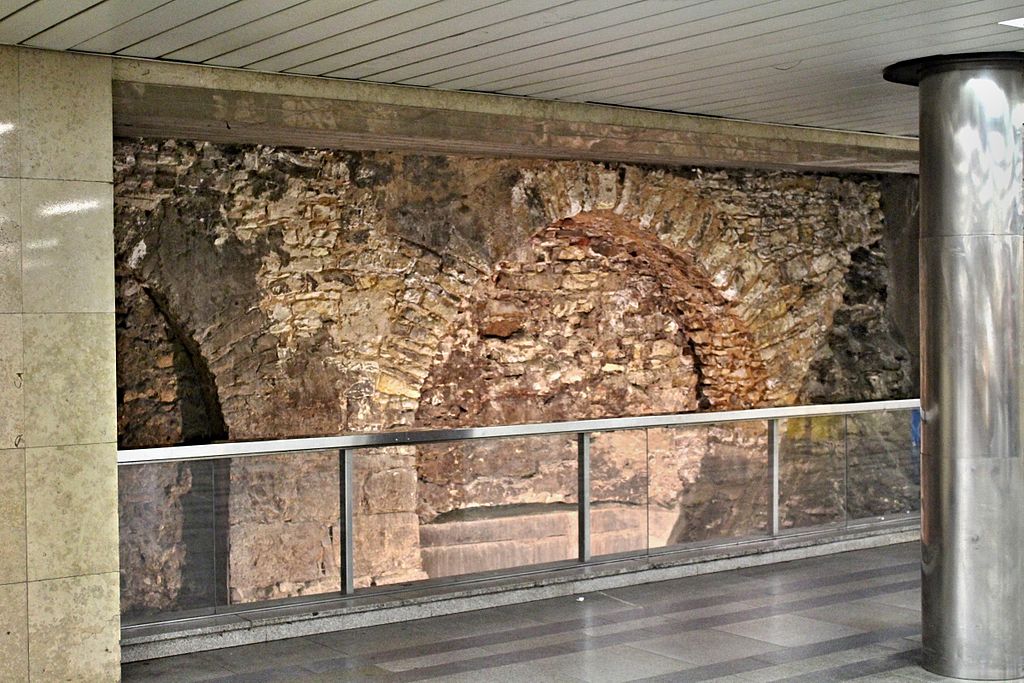
The remains were incorporated into the station and can be seen near the northwestern exit of the station.
Longest Escalator in all of EU at Náměstí Míru
The escalator at Náměstí Míru (Peace Square) station in Vinohrady is the longest escalator in the European Union (length 87 m, vertical span 43.5 m, 533 steps, taking 2 minutes and 15 seconds to ascend).
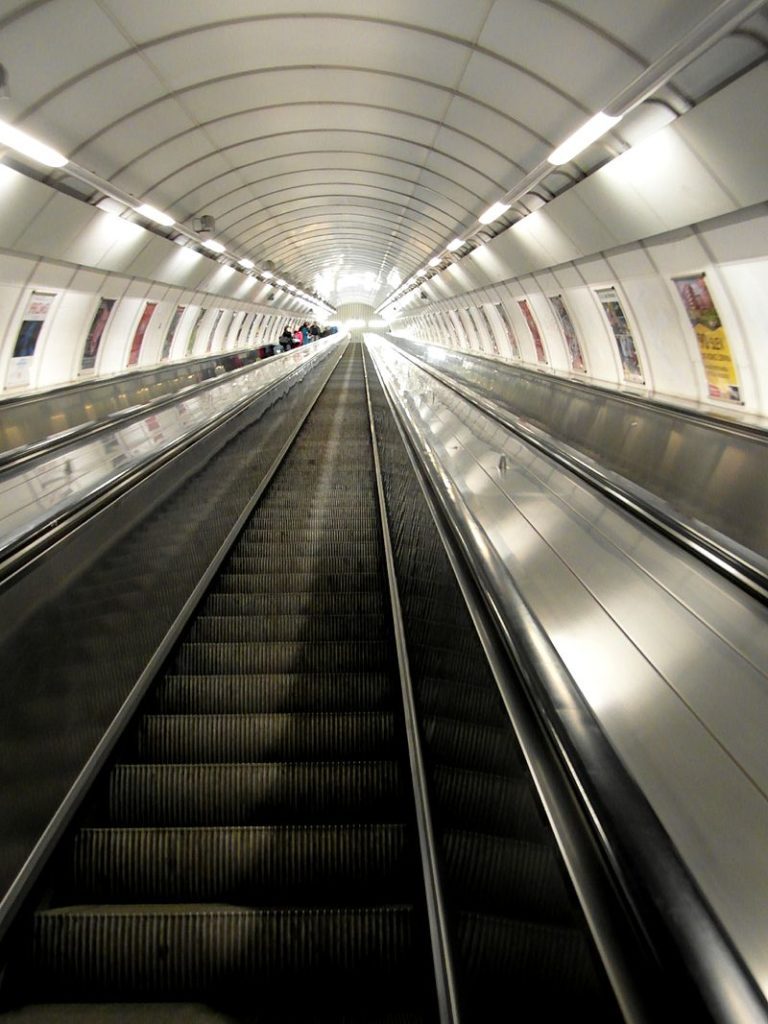
Náměstí Míru is also the deepest station of the European Union (53 metres).
Communist-era Art Underground
Anděl station was known as Moskevská (Moscow Station) until 1990. It opened on the same day in 1985 as the Prazhskaya (Prague) station on the Moscow Metro. It contains several pieces of art promoting Soviet-Czechoslovak friendship. Anděl station, like the Smíchov train station, contains some of the best-preserved examples of Communist-era art remaining in Prague.
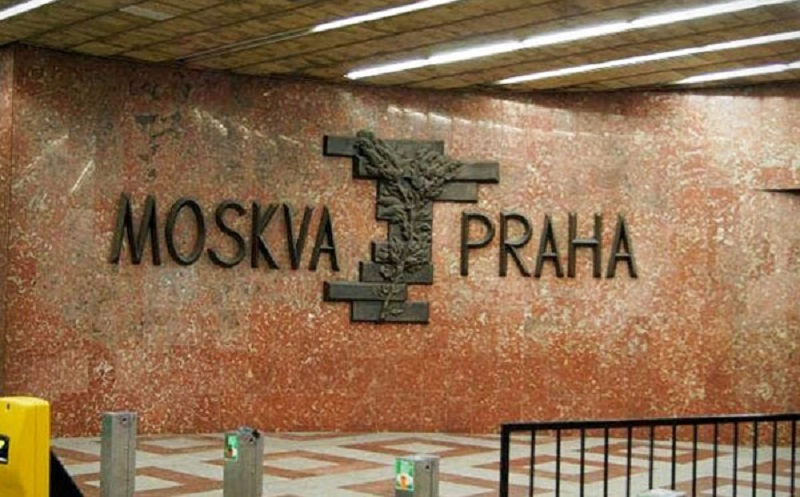
The entrance hall of the Hradčanská station still features the coat of arms of Czechoslovak socialist republic and the motto Všechna moc v Československé socialistické republice patří pracujícímu lidu (“All the power in the Czechoslovak socialist republic belongs to the working people”) which were parts of the station’s original socialist-realist design.
During the communist period rumors circulated that large “survival chambers” were being built for high officials of the government in the case of a nuclear attack. After the fall of communism such areas were shown indeed to exist, but not on the scale envisioned nor fitted out in luxury.
Above Ground Subway – Recycling
The terminal station Depo Hostivař was constructed within the buildings of an existing railway depot. The extension is the first segment of the system to be built above ground and not through a tunnel.
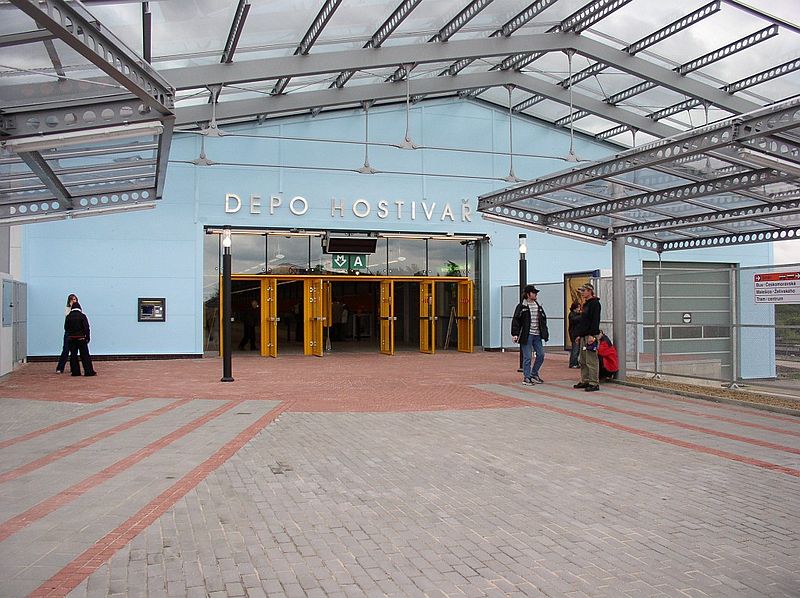
This station is also interesting that there are not reversing tracks and the train departs from the same track on which arrived.
Ticket to Ride
The Prague Metro operates on a proof-of-payment system, as does the entire Prague Integrated Transport (PID) network. Passengers must buy and validate a ticket before entering a station’s paid area. There are uniformed and plainclothes fare inspectors who randomly check passengers’ tickets within the paid area.
Basic single tickets cost 32 CZK (as of 5 February 2019) for a 90-minute ride or 24 CZK for a 30-minute ride. In November 2007 SMS purchase for basic single transfer tickets and day tickets was introduced (available only from Czech mobile phones).
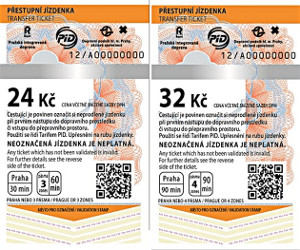
Short-term tourist passes are available for periods of 24 hours (110 CZK) and 3 days (310 CZK). As of 2019, single tickets and short term passes can be purchased online using the PID Lítačka smartphone app. Since April 2019 single and 24 hour tickets can be also bought on board of every tram and in all metro stations, using contactless payment, including payment apps like Google Pay or Apple Pay. Such tickets are already validated from the time of purchase.
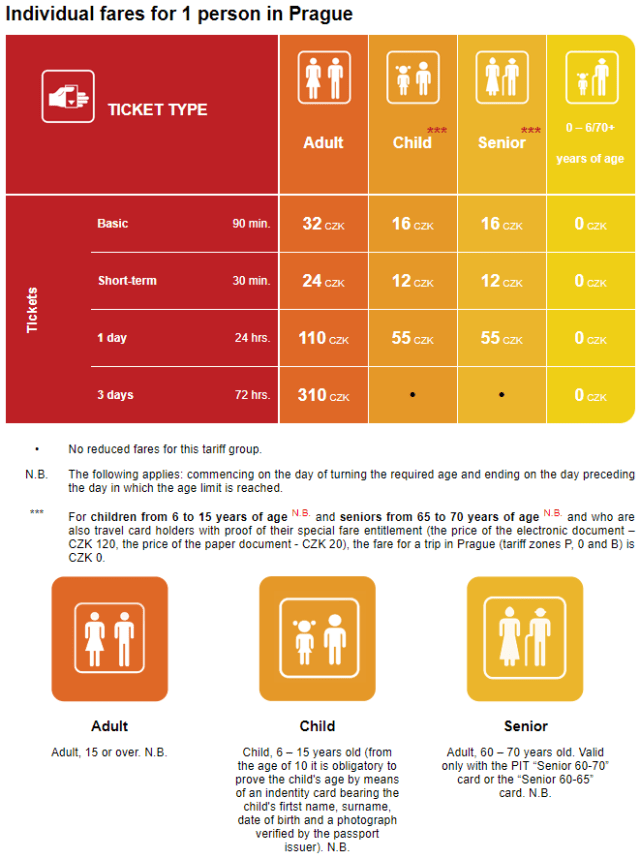
Longer-term season tickets can be bought on the smart ticketing system Lítačka card, for periods of one month (550 CZK), three months (1480 CZK) or the annual pass for 3650 CZK (10 CZK/day). Students studying in the Czech republic with a valid student license ISIC, children under 18 years old and seniors over 60 years of age can buy season tickets at reduced prices. Reduced ticket prices are: 130 CZK for 30 days, 360 CZK for 90 days or 1280 CZK for a year.
Make sure you get a ticket! Undercover ticket-checkers will catch you and the fines are expensive.
The tickets are the same for all means of transport in Prague (metro, trams, buses, funiculars and ferries).
Ukončete, prosím, výstup a nástup, dveře se zavírají
The announcement made through the public address system when the doors are closing, “Ukončete, prosím, výstup a nástup, dveře se zavírají” (“Please finish exiting and boarding, the doors are closing”) has become a symbol of Prague for many tourists, and is possibly the first clear Czech phrase many travelers hear. The announcement has been similar since 1974, when the first line was opened, although the original version did not include the word “please”. The announcements are voiced by Světlana Lavičková [cs] on Line A, by Eva Jurinová [cs] on Line B, and by Tomáš Černý [cs] on Line C.
Take a listen…
Other announcements include: “Vystupujte vpravo, ve směru jízdy” (“Exit on the right side in the direction of travel”), “Konečná stanice, prosíme, vystupte” (“Terminal station, please exit the train”) and “Přestup na linky S a další vlakové spoje” (“Transfer to S lines and other train services”).
Remember to visit our other post on the Prague Metro system which shows all of the unique stations, Beneath The City: The Prague Metro.
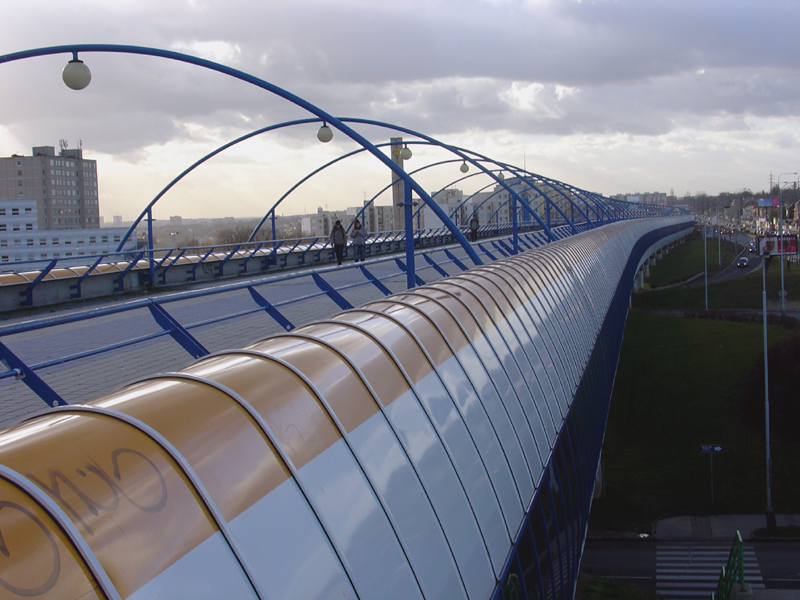
We hope you enjoyed our Prague Subway Guide for Tourists.
We know that you could spend hours, days, weeks and months finding some of this information yourselves – but at this website, we curate the best of what we find for you and place it easily and conveniently into one place. Please take a moment today to recognize our efforts and make a donation towards the operational costs of this site – your support keeps the site alive and keeps us searching for the best of our heritage to bring to you.
Remember, we rely solely on your donations to keep the project going.
Thank you in advance!
If you have not already subscribed to get TresBohemes.com delivered to your inbox, please use the form below now so you never miss another post.



